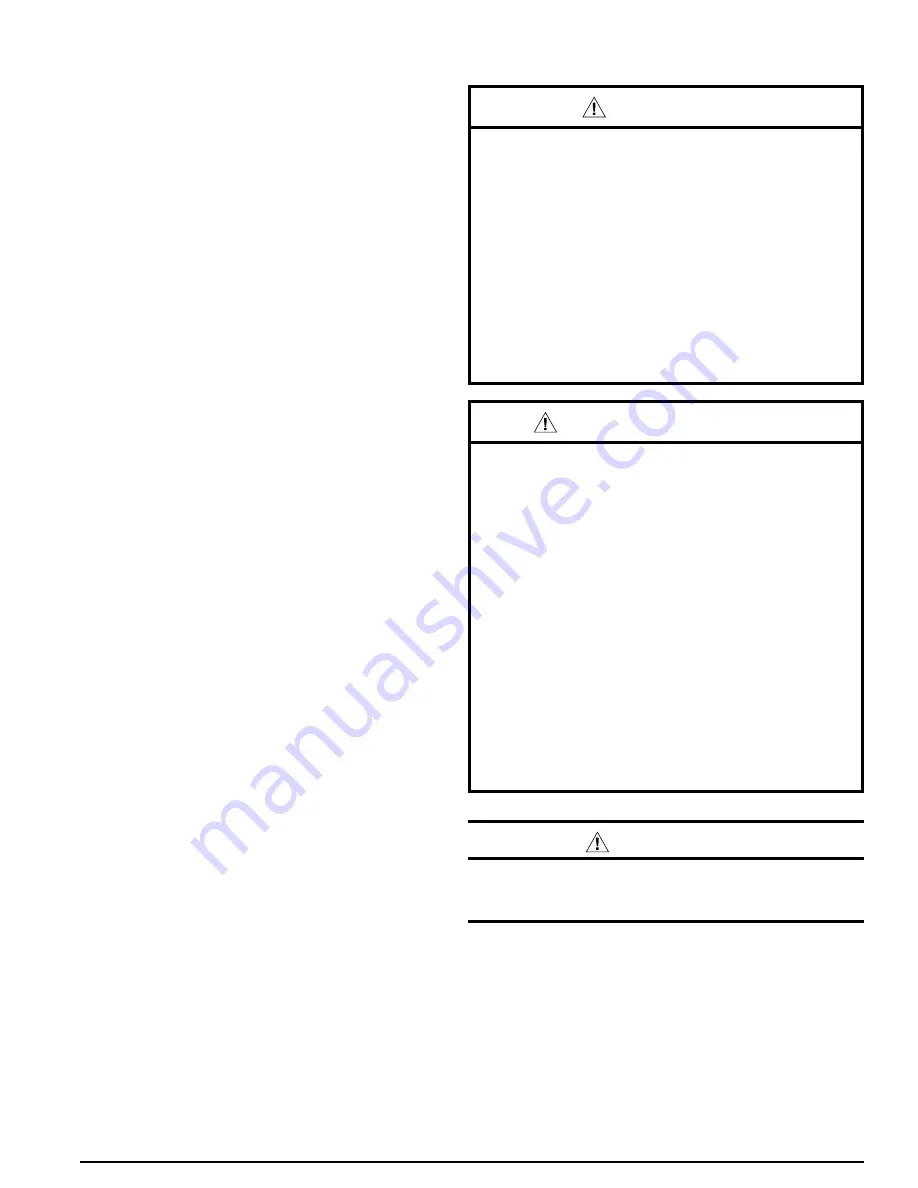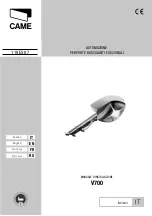
16
OPERATING SEQUENCE
The operating sequences for the heating, cooling, and fan
modes are described below. Refer to the field and unit wiring
.
Heating Cycle
1. The thermostat calls for heat by energizing the
W
terminal
with 24VAC.
2. The control verifies the safety circuit pressure switch is open
and high temperature limit switch circuit is closed.
3. If the pressure switch is open, the control energizes the
inducer and waits for the pressure switch to close. The
pressure switch must close within 10 seconds.
4. The control runs the inducer for a 30 second pre-purge.
5. The control energizes the igniter output for a 30 second
warm-up period.
6. The control energizes the main gas valve for 3 seconds.
7. If the flame is proved after igniting the gas, the control de-
energizes the igniter. The gas valve and inducer remain
energized. The control goes to blower on delay.
8. If flame is present, the control energizes the blower on
the selected HEAT speed 30 seconds after the gas valve
opened. The gas valve remains energized while the inducer
ramps to Max. RPM over a programmed time period.
9. When the thermostat demand for heat is satisfied, the control
de-energizes the gas valve. The inducer output remains on
for a 90 second post-purge period.
10. Blower off timing of 60, 90, 120, & 180 seconds (depending
on the movable jumper setting) begins when the thermostat
is satisfied. See Figure 14 (page 16). The control will
operate at the selected HEAT speed of 60 seconds, then
change to FAN speed for the remaining off delay time. If
the blower off delay jumper is not present, the fan should
still operate for 120 seconds at the selected HEAT speed.
The indoor blower motor is de-energized after a blower off
delay as selected by the movable jumper.
Cooling Cycle
1. The thermostat calls for cooling by energizing the
Y
&
G
terminal with 24VAC.
2. The control energizes the blower in the cooling speed and
sends 24VAC to the contactor in the condensing section.
3. When the thermostat removes the call for cooling, the
contactor in the outdoor condensing section is de-energized
and the control continues to run the fan for a period of 60
seconds.
Fan Mode
• When the thermostat energizes the
G
terminal for continuous
fan (without calling for heat or cooling), the indoor fan is
energized on the selected FAN speed. See Figure ## (Page
##). The control defaults to MEDIUM HIGH if the movable
jumper is not attached.
• If a call for cooling occurs during continuous fan, the blower
will switch over to the selected COOL speed.
• If the
W
terminal receives a call for heat during continuous
fan, the blower will de-energize and reset to delayed ON
timing.
• A call for fan is ignored while in lockout.
EQUIPMENT MAINTENANCE
WARNING:
ELECTRICAL SHOCK, FIRE OR
EXPLOSION HAZARD
Failure to follow safety warnings exactly could
result in serious injury, death, or property damage.
Improper servicing could result in dangerous
operation, serious injury, death or property
damage.
• Before servicing, disconnect all electrical power
to furnace.
• When servicing controls, label all wires prior to
disconnecting. Reconnect wires correctly.
• Verify proper operation after servicing.
AVERTISSEMENT:
RISQUE D’ÉLECTROCUTION, D’INCENDIE
OU D’EXPLOSION
Si les consignes de sécurité ne sont pas suivies
à la lettre, cela peut entraîner la mort, de graves
blessures, un fonctionnement dangereux ou des
dommages matériels.
Un entretien inadéquat peut entraîner la mort, de
graves blessures, un fonctionnement dangereux
ou des dommages matériels.
• Avant de faire l’entretien de l’appareil de
chauffage, le débrancher de l’alimentation
électrique.
• Avant l’entretien des commandes, étiqueter tous
les fils avant de les déconnecter. Rebrancher
correctement les fils.
• Vérifier que l’appareil fonctionne correctement
après l’entretien.
CAUTION:
Use care when removing parts from this unit.
Personal injury can result from sharp metal edges
present in all equipment of sheet metal construction.
Proper maintenance is important to achieve optimum
performance from the system. The ability to properly perform
maintenance on this equipment requires certain mechanical
skills and tools. If you do not possess these skills, contact your
dealer for maintenance. Consult your local dealer about the
availability of maintenance contracts. Routine maintenance
should include the following:
















































